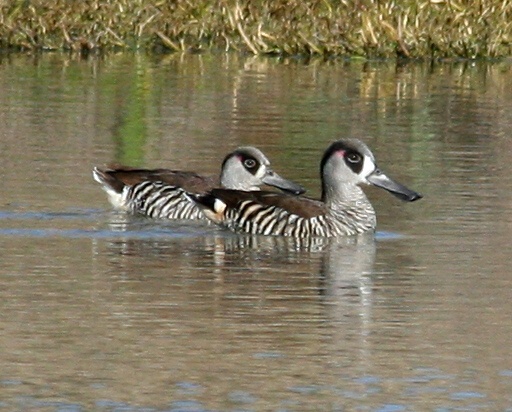Lowbidgee Floodplain on:
[Wikipedia]
[Google]
[Amazon]
 The Lowbidgee Floodplain extends from Balranald to near Waradgery Station, about west of Hay, in south-western New South Wales. The Lowbidgee Floodplain is part of the Traditional lands of the Nari Nari and Muthi Muthi Aboriginal peoples.
It comprises an extensive (c. ) floodplain of the lower Murrumbidgee River and its tributaries, including the confluence of the Murrumbidgee with the Lachlan River, with numerous swamps and lakes. The extent of the floodplain has been reduced in size from over at the beginning of the 20th century by the construction of dams, irrigation systems and other hydraulic engineering works, with the water inflow declining by at least 60% between 1888 and 1998. Apart from
The Lowbidgee Floodplain extends from Balranald to near Waradgery Station, about west of Hay, in south-western New South Wales. The Lowbidgee Floodplain is part of the Traditional lands of the Nari Nari and Muthi Muthi Aboriginal peoples.
It comprises an extensive (c. ) floodplain of the lower Murrumbidgee River and its tributaries, including the confluence of the Murrumbidgee with the Lachlan River, with numerous swamps and lakes. The extent of the floodplain has been reduced in size from over at the beginning of the 20th century by the construction of dams, irrigation systems and other hydraulic engineering works, with the water inflow declining by at least 60% between 1888 and 1998. Apart from
 The Lowbidgee Floodplain extends from Balranald to near Waradgery Station, about west of Hay, in south-western New South Wales. The Lowbidgee Floodplain is part of the Traditional lands of the Nari Nari and Muthi Muthi Aboriginal peoples.
It comprises an extensive (c. ) floodplain of the lower Murrumbidgee River and its tributaries, including the confluence of the Murrumbidgee with the Lachlan River, with numerous swamps and lakes. The extent of the floodplain has been reduced in size from over at the beginning of the 20th century by the construction of dams, irrigation systems and other hydraulic engineering works, with the water inflow declining by at least 60% between 1888 and 1998. Apart from
The Lowbidgee Floodplain extends from Balranald to near Waradgery Station, about west of Hay, in south-western New South Wales. The Lowbidgee Floodplain is part of the Traditional lands of the Nari Nari and Muthi Muthi Aboriginal peoples.
It comprises an extensive (c. ) floodplain of the lower Murrumbidgee River and its tributaries, including the confluence of the Murrumbidgee with the Lachlan River, with numerous swamps and lakes. The extent of the floodplain has been reduced in size from over at the beginning of the 20th century by the construction of dams, irrigation systems and other hydraulic engineering works, with the water inflow declining by at least 60% between 1888 and 1998. Apart from Yanga National Park
The Yanga National Park is a newly formed national park, located near the township of Balranald in south- western New South Wales. It covers an area of which includes of Yanga Nature Reserve, and has a frontage of 170 kilometres (110 mi) ...
(established in 2005 on the former Yanga Station) most of the floodplain consists of commercial irrigated farmland.BirdLife International. (2011). Important Bird Areas factsheet: Lowbidgee Floodplain. Downloaded from http://www.birdlife.org on 08/08/2011.
Birds
A area of the floodplain, defined as the maximum area of contemporary flooding, has been identified byBirdLife International
BirdLife International is a global partnership of non-governmental organizations that strives to conserve birds and their habitats. BirdLife International's priorities include preventing extinction of bird species, identifying and safeguarding ...
as an Important Bird Area
An Important Bird and Biodiversity Area (IBA) is an area identified using an internationally agreed set of criteria as being globally important for the conservation of bird populations.
IBA was developed and sites are identified by BirdLife Int ...
(IBA) because it has supported up to 650,000 waterbirds during times of major flooding, and regularly supports over 1% of the world populations of black swan
The black swan (''Cygnus atratus'') is a large waterbird, a species of swan which breeds mainly in the southeast and southwest regions of Australia. Within Australia, the black swan is nomadic, with erratic migration patterns dependent upon c ...
s, freckled ducks, pink-eared ducks, grey teal
The grey teal (''Anas gracilis'') is a dabbling duck found in open wetlands in Australia and New Zealand.
Description
It can be identified due to the presence of a crimson coloured iris in its eyes.Winter, M. (2018). Grey Teal. Wilderness Maga ...
s, Australasian shovelers, straw-necked ibis
The straw-necked ibis (''Threskiornis spinicollis'') is a bird of the ibis and spoonbill family Threskiornithidae. It can be found throughout Australia, New Guinea, and parts of Indonesia. Adults have distinctive straw-like feathers on their neck ...
es, yellow-billed spoonbill
The yellow-billed spoonbill (''Platalea flavipes'') is a gregarious Wader, wading bird of the ibis and spoonbill family, Threskiornithidae. It is native to Australia, and is a vagrant to New Zealand, Lord Howe Island and Norfolk Island.
Taxonomy ...
s and white-headed stilt
The pied stilt (''Himantopus leucocephalus''), also known as the white-headed stilt, is a shorebird in the family Recurvirostridae. It is widely distributed with a large total population size and apparently stable population trend, occurring in ...
s. Other birds that have been recorded in large numbers include whiskered terns and Eurasian coots. Reduced inundation of the floodplain, through the construction of water management works, has resulted in waterbird numbers dropping by 90%, from an average of 140,000 in 1983-86 to 14,000 in 1998-2001.
References
{{coord, 34, 27, 35, S, 143, 59, 53, E, display=title, region:AU-NSW_type:waterbody Important Bird Areas of New South Wales Riverina Floodplains of Australia Wetlands of New South Wales